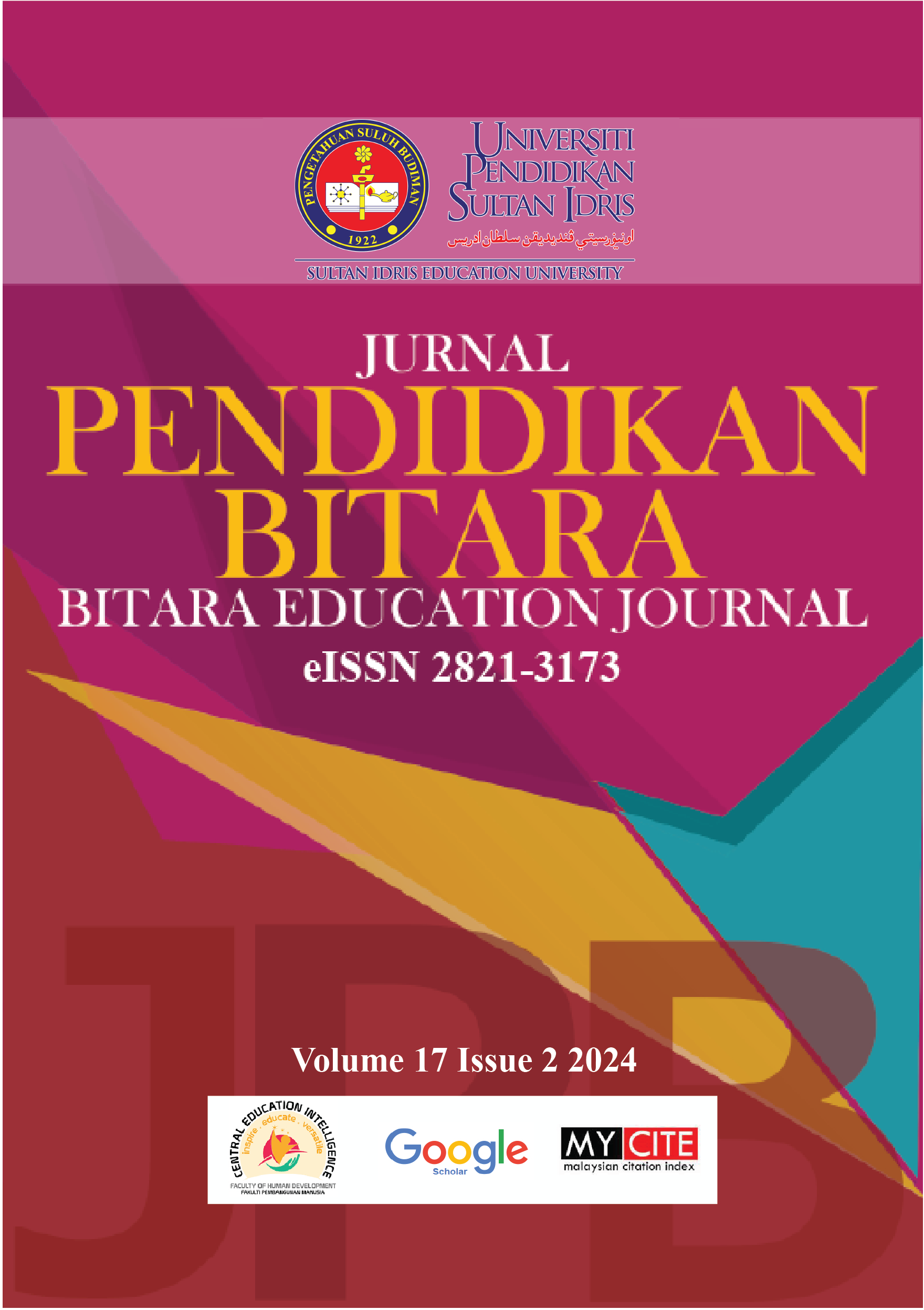Teachers' Perceptions about the Use of Artificial Intelligence (AI) in Teacher Teaching at the Middle School Level
DOI:
https://doi.org/10.37134/bitara.vol17.2.13.2024Keywords:
Artificial Intelligence, benefits of use, usability, social influence, acceptance readinessAbstract
Introduction: This research was conducted to examine the perception of the use of Artificial intelligence tools in teaching practice among teachers at secondary schools. According to the changing trends in the global education arena, the use of Artificial Intelligence (AI) is increasingly expanding. Aims: This aims to enhance the processes of learning and teaching for greater effectiveness. The utilization of AI in education also creates opportunities to improve the quality of education, make learning more adaptive, and prepare the younger generation to face challenges in the future. In Malaysia, many teachers still face challenges in designing engaging learning experiences. In addition, ineffective teaching strategies that do not support differentiated learning methods contribute to an increased student learning rate. Objective: This study was conducted to examine perceptions of the benefits of use, usability, social influence, and readiness for AI acceptance at local school in Malaysia. Methodology: This study utilized a descriptive quantitative approach by collecting data through a survey via questionnaires. The questionnaires were distributed to 90 teachers at a local secondary school, with only 73 respondents selected as the sample for this study based on the Krejcie and Morgan Table. The data were then analysed in descriptive quantitative analysis using the Statistical Package for Social Science (SPSS) version 15. Results: The study results showed that perceptions of the benefits of use, usability, social influence, and readiness for acceptance indicated a high level of agreement. The highest correlation strength was found between social influence and acceptance readiness with r=0.59, p<0.05, compared to usability with r=0.46, p<0.05, and perceived usefulness with r=0.53, p<0.05. Conclusion: However, overall, it indicates a moderate level of relationship. The coleration values showed that b (0.59) had the highest contribution to the level of AI acceptance readiness in teaching among teachers at school, which is social influence. Conclusion: Overall, the findings of this study suggest that encouragement from superiors and social influence are crucial to encouraging teachers to fully adopt the use of AI in their teaching.
Downloads
References
Russell and Norvig. 2003. Artificial Intelligence: A Modern Approach, 2nd ed., New Jersey Education 17, 41–56
Wu, Meng & Huang.2006. Application of Artificial Neural Network to the Identification of Intelligence, pp. 162–168
Nanni & Lumini,.2008. Ensemble generation and feature selection for the identification of students with learning disabilities. Expert Systems with Applications 36, 3896–3900
Georgopoulos, Malandraki & Stylios.2003. A fuzzy cognitive map approach to differential 29, 261–278
Hernadez, Mousalli & Rivas.2009. Learning Difficulties Diagnosis for Children’s Basic Education using Expert Systems. WSEAS Transactions on Information Science and Applications 7(6)
Gonzalez, Guerra, Sanabria, Moreno, Noda & Bruno.2010. Automatic system for the Systems with Applications 37, 140–148
S.J Russell and P. Norving. 2003. Artificial Intelligence: A Modern Approach, 2nd ed. New Jersy
Nanni and A. Lumini. 2008. Ensemble generation and feature selection for the identification of students with learning disabilities. Expert Systems with Applications.36. pp. 3896- 3900
Department of Education and skills. 2001. Special Educational Needs Code of Practice, London DFES
Siti Rosni Mohamad Yusoff & Abd Samad Hanif. 2019. Inovasi Digital dalam Pengajaran dan Pembelajaran.Oxford Fajar. 13-19.
Ranjit Singth. 2012. Attitude of B.Ed. Students Towards Learning through ICT in Relation to Their Learning Style. International Journal of Enhanced Research in Eduacation Development. 1(11). 1-8.
V. Pang, Y.K Yap & Y.M. Tam. 1992. Buku Sumber Komputer dalam Pendidikan. Siri pendidikan Logman. 32-35.
Rozinah Jamaludin. 2000. Asas-asas Multimedia dalam Pendidikan. Siri Pengajian dan Pendidikan Utusan. 163-165.
Nur Fatahiyah Mohamed Hata & Siti Nur Diyana Mahmud. 2020. Kesediaan Guru Sains dan Matematik dalam Melaksanakan Pendidikan Stem dari Aspek Pengetahuan, Sikap dan Pengalaman Mengajar. Akademika 90(3). 85-102.
Krejcie, R. V., & Morgan, D. W. (1970). Determining sample size for research activities. Educational and Psychological Measurement, 30(3), 607-610.
Downloads
Published
How to Cite
Issue
Section
License
Copyright (c) 2024 Ting Siew Chear, Helmi Norman

This work is licensed under a Creative Commons Attribution-NonCommercial-ShareAlike 4.0 International License.





